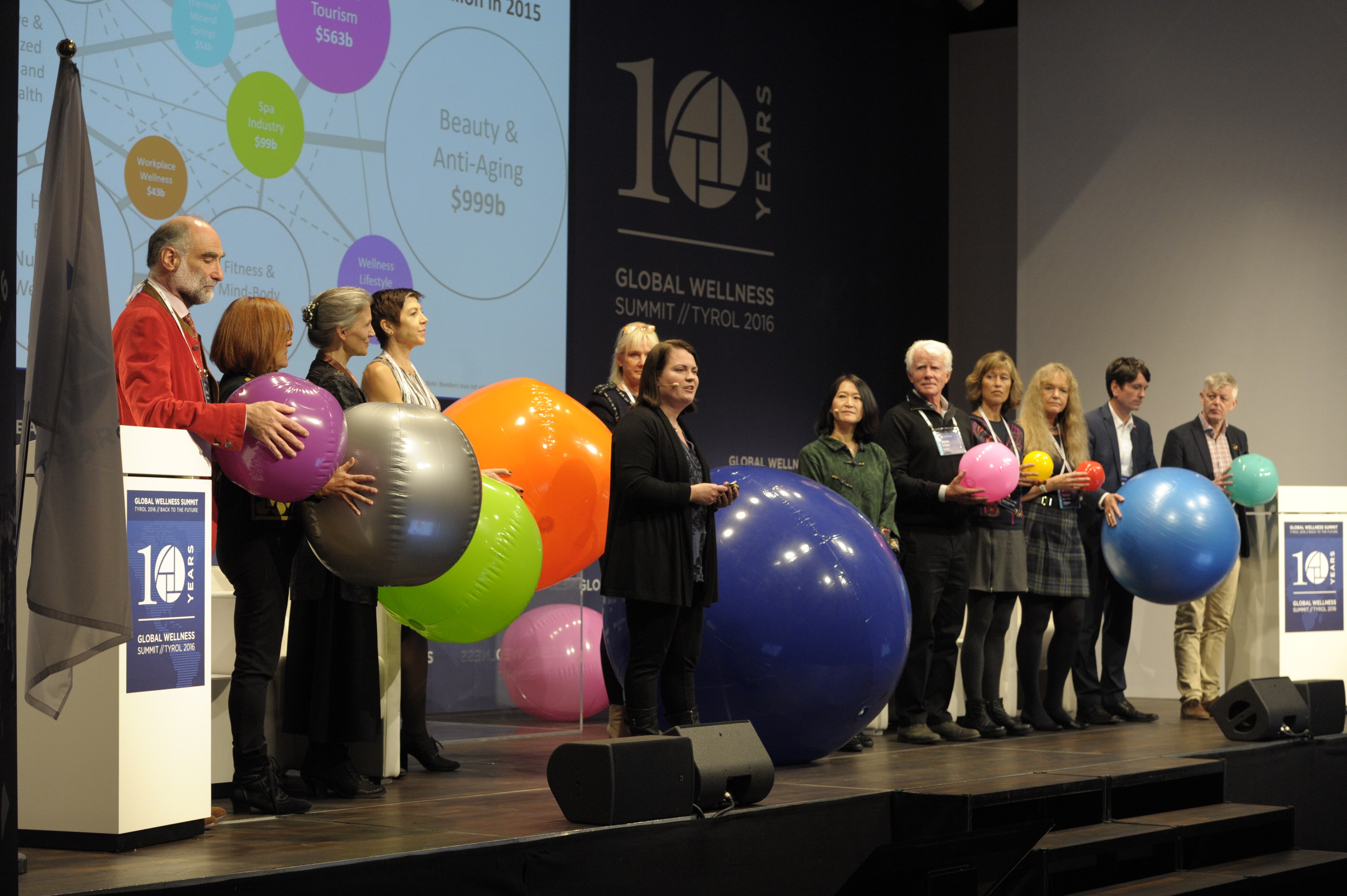
New research from the Global Wellness Institute (GWI) confirms wellness is one of the world’s fastest-growing, most resilient markets, clocking up double-digit growth while the global economy shrank by -3.6%. The global wellness industry grew 10.6% between 20013 and 2015, from a $3.36trn market in 2013 to $3.72trn in 2015, according to research released by the Institute.
Among the ten wellness markets analysed, the fastest growing from 2013 to 2015 were:
1) Preventative/Personalized Medicine and Public Health (+23.5%),
2) Fitness and Mind-Body (+21.4%),
3) Wellness Lifestyle Real Estate (+18.6%),
4) Wellness Tourism (+14%), and
5) Healthy Eating, Nutrition and Weight Loss (+12.8%).
These topline numbers were released at the 10th annual Global Wellness Summit being held in Kitzbühel, Austria 17-19 October 2016. This year, the Summit attracted 500 industry leaders from 45 nations, a record in the history of the sold-out convention. An in-depth report expanding on these figures, the 2016 Global Wellness Economy, will be released in early 2017.
“Recent years have been marked by global economic contraction and disruptive geopolitical events, but a ‘wellness economy’ just keeps rising, with an upward trajectory that seems unstoppable,” said Ophelia Yeung, senior research fellow at GWI, at the Summit.
“We predict that consumers, governments and employers will continue to spend big on wellness because of these megatrends: an emerging global middle class, a rapidly aging world population, a chronic disease and stress epidemic, the failure of the ‘sick-care’ medical model, resulting in uncontrollable healthcare costs, and a growing subset of more affluent, educated consumers seeking experiences rooted in meaning, purpose, authenticity and nature,” said Yeung.
“A profound shift in the way people consume wellness is underway. Once a luxury or ‘add-on’, it’s now being infused into every aspect of daily life, from how people work to how they travel,” noted Katherine Johnston, senior research fellow at GWI. “And the spending on proactive healthy choices – on wellness – will continue to comprise a greater percentage of massive multi-trillion industries, whether real estate, food and beverage, or travel.”
GWS participants were able to take in 60 speakers plus a number of workshops and panels addressing a variety of interesting topics. These included the keynote of Daniel Bosshart, PhD, CEO of Gottlieb Duttweiler Institute, Switzerland. Bosshart talked about his vision of ‘Wellness 2030’: “from old fashioned industrial romance to data Buddhism”.
For Bosshart, the digital revolution is over – we are in a digital age now. But endless data is a waste, unless we know how to use it. Devices raise expectations and everybody expects more. His advice? “Listen not only to your data, but to your customer – this is complementary”. One solution for the future of wellness could be to connect to nature with help of data. An important issue is food. For the Bosshart, healthy food can play a new global role leading to a happy live. Food cannot be copied, even in the age of 3D printers, people need to smell and taste.
The important role of food was also underlined by Frenchman Thierry Malleret, co-founder of ‘The monthly Barometer’. According to Malloret, the winners will be organic and high-quality food companies (even in China), all wellness related themes, and travel and tourism. On the losing side are companies that pollute and large food and beverage companies.
For Malleret it is a paradox, that we live in an age of abundance, yet the symptoms of ‘un-wellness’, from loneliness and the rise of mental illness to obesity, are still so apparent. His solution for this includes workplace wellness programmes as a strategic imperative.
There were exciting lectures and ideas on architecture and design. Ann Marie Aguilar, associate director of Arup UK shared visions of responsive, conscious architecture and “living buildings”. In the future, said Aguilar, it will be possible to collect data on how people feel and change the temperature or lighting in work places. In spas, the treatment room of the future will switch ambiance, light, temperature and music, depending on the feeling and needs of the client, without having to ask them any questions.
Six Senses is a pioneer, when it comes to adapting a resort hotel to the environment and the regional location. They call it “biophilic design” with a visual connection to nature, the presence of water and building with natural materials. Again, food plays an important role, with many ingredients making it possible to “eat with six senses” being harvested from own organic gardens.
There is no doubt that the Global Wellness Summit is the leading industry event around the globe in this sector. The presence of the Dalai Lama at the meeting in New Delhi, India, in 2013 remains unbelievable to me. Marrakech and Mexico City as destinations followed in 2014 and 2015. The hosts in Tyrol did a great job and arranged an unforgettable event.
For everyone who wants to participate in 2017, here is a date for the diary: the next Global Wellness Summit will take place on 9-11 October 2017 in Florida, USA, at the legendary The Breakers on Palm Beach. Founded in 1896, this legendary hotel has 2,000 staff and is the only luxury hotel in the US still in the hands of the original owner family.
Hildegard Dorn-Petersen FCSI
